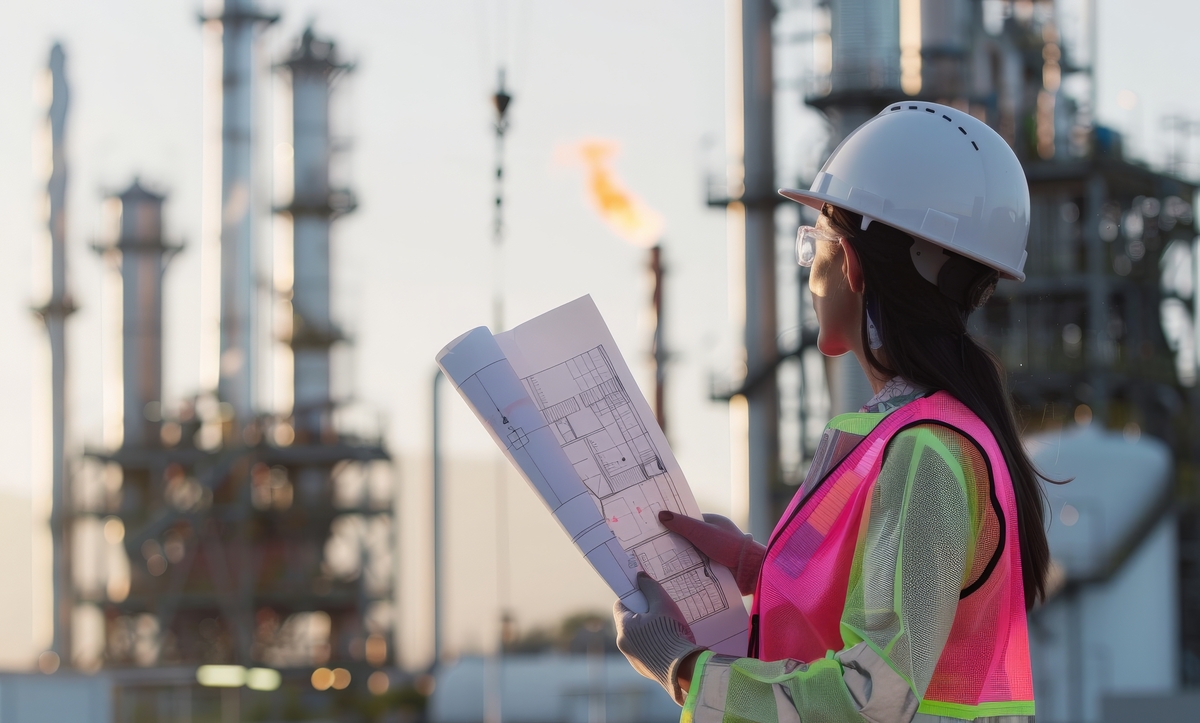The process of continuously seeing and analyzing different project metrics as they occur is known as real-time construction monitoring. Real-time monitoring offers immediate input on project progress, resource usage, and possible problems, in contrast to traditional monitoring techniques that depend on sporadic updates. Cutting-edge technologies like wearables, drones, the Internet of Things (IoT), and sophisticated project management software are integrated to make this possible.
Project delivery that is both timely and efficient is crucial in the fast-paced world of construction. One of the most important instruments for accomplishing these objectives is real-time construction monitoring. Real-time monitoring gives project managers immediate access to critical information through the use of cutting-edge technologies and data analytics, empowering them to act quickly and wisely.
This method raises construction projects’ general quality and safety while simultaneously increasing efficiency. We will examine the significant effects of real-time construction monitoring on project delivery in this 2025 guide, including the advantages, important technologies, difficulties, potential trends, and best practices for application.
Table of Contents
The Significance of Real-Time Monitoring in Construction
It is impossible to exaggerate the importance of real-time construction monitoring for project delivery. Here are a few of the main justifications for its necessity:
1. Improved Decision-Making
Project managers can act fast and decisively when they have access to real-time data. This quick insight ensures that the project continues on schedule by resolving problems before they become more serious.
2. Enhanced Construction Productivity
In real-time monitoring, team members’ collaboration and communication are streamlined. It cuts down on delays brought on by misconceptions or miscommunications by giving current information.
3. Risk Management
Early risk identification in the project lifecycle is made possible by ongoing monitoring. By taking a proactive stance, the impact of unanticipated occurrences on project delivery can be reduced by timely interventions.

4. Quality Control in Construction
By using real-time data, construction activities are made sure to comply with the established criteria of quality. Quick feedback makes it possible to make corrections quickly, which lowers the possibility of errors and rework.
5. Enhancement of Safety Solutions
Real-time monitoring contributes to the upkeep of a secure workplace. Workers can be quickly alerted to potential hazards by wearing wearable devices and sensors, which can track their movements and ambient conditions.
Important Technologies for Monitoring Construction in Real Time
The technologies used determine how successful real-time construction monitoring is. The following are a few of the most notable ones:
1. Internet of Things (IoT)
IoT devices gather and send data on a range of characteristics, such as temperature, humidity, and equipment utilization. These devices include sensors and smart equipment. After then, this data is examined to reveal details about the state and advancement of the project.
2. Drones in Construction
Aerial photos and movies of building sites can be taken by drones that are outfitted with high-resolution cameras and sensors. These photos offer a thorough perspective of the undertaking, making it easier to monitor development and spot problems that would not be apparent from the ground.
3. Wearable Technology in Construction
Wearables that track an employee’s health and safety include smart vests and helmets. These tools monitor vital indicators, identify signs of exhaustion, and warn employees of potentially dangerous situations.
4. Project Management Software
To present a cohesive picture of the project, sophisticated software platforms combine data from multiple sources. These solutions improve total project oversight with functionality for scheduling, resource management, and real-time reporting.
The Best Ways to Use Real-Time Construction Monitoring
It is crucial to apply real-time construction monitoring according to best practices in order to get the most out of it. The following suggestions are provided:
- Choose the Appropriate Technologies: Select the technologies that will best meet the unique requirements of your project. Take into account variables including the scope, intricacy, and kinds of data that require monitoring.
- Assure Data Accuracy: The quality of the data gathered determines how effective real-time monitoring is. Make sure sensors and other devices are calibrated on a regular basis to guarantee accurate data.
- Educate Your Group: Make certain that each team member has received the necessary training to operate the monitoring tools. Acquaintance with these instruments will augment their efficacy and the project’s total triumph.
- Integrate Systems: To establish a smooth information flow, integrate current project management systems with real-time monitoring technologies. All parties involved will always have access to the most recent data thanks to this connection.
- Establish Specific Goals: Clearly define your goals for in-the-moment oversight and let the team know what they are. This guarantees that everyone is aware of the objectives and makes an effort to meet them.
- Review and Modify Often: Review and modify tactics as necessary based on the data gathered from real-time monitoring. By using an iterative process, the project can stay focused on its objectives and adjust to any obstacles or changes.
Challenges in Monitoring Construction in Real Time
Although real-time construction monitoring has many advantages, there are a number of drawbacks as well.
- Data Overload: The constant barrage of data sometimes be too much to handle. Making educated decisions is a necessary yet difficult process of filtering and interpreting pertinent information.
- Problems with Integration: It can be difficult and time-consuming to integrate new monitoring technology with current systems.
- Cost: Putting real-time monitoring systems into practice can be costly. For some projects, the upfront cost and continuing maintenance expenses could be a hurdle.
- Security and Privacy: Safeguarding employee privacy and ensuring the security of data gathered via real-time monitoring are major issues.
Suggested article to read: Data Security in Construction Data Management | Cybersecurity in Construction
Prospects for the Future of Real-Time Construction Monitoring
The following tendencies will probably influence real-time construction monitoring in the future:
- Artificial Intelligence (AI) and Machine Learning in Construction: Algorithms for AI and machine learning will increasingly be used to evaluate real-time data, anticipate potential issues, and suggest corrective actions.
- 5G Technology: The introduction of 5G technology will improve data transfer speed and dependability, making real-time monitoring more effective.
- Augmented Reality (AR): AR tools will offer immersive means of monitoring construction progress and identifying differences between the work that is really being done and what is planned.
- Sustainability Monitoring: To help projects lessen their environmental impact, real-time monitoring will increasingly concentrate on sustainability measures.
Suggested article to read: Explore the Impact of Augmented Reality in Construction (2025) | Virtual Reality in Construction; VR Ultimate Guide 2025

Conclusion
Real-time construction monitoring is a game-changing strategy that improves project completion dramatically. It gives project managers quick access to vital information so they can make wise decisions that enhance productivity, quality, and safety. The use of cutting-edge technology like wearables, drones, IoT, and sophisticated project management software will become more and more crucial as 2025 approaches. These technologies offer a proactive approach to risk management and quality control in addition to streamlining project management procedures.
By putting best practices for real-time construction monitoring into reality, projects will be finished to the highest standards, on schedule, and within budget. Adopting this cutting-edge strategy is essential to attaining greatness in the construction sector, not just a trend. Real-time monitoring is at the core of the construction project delivery of the future, ensuring success and efficiency.
Suggested article for reading:
Construction Monitoring in Project Management Tools; 2025 Guide
The Role of Construction Monitoring in Risk Management; 2025 Guide
Resources:
ScheduleReader | Diacto | LumberFI | AECBytes | Zepth
For all the pictures: Freepik



